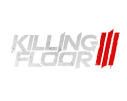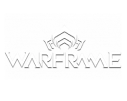Round-based Zombies is about survival with structure. Every map looks chaotic, but patterns decide whether you reach 30 or fall before 15. This guide gives routes, wall buys, and team roles that match Treyarch’s new crew beats. It focuses on practical steps, not filler.
Early Rounds Matter: Goals and Guardrails
The first ten rounds decide your whole run. Unlock power quickly to open core map functions. Secure Pack-a-Punch as soon as points allow. Build a safe training loop before zombies grow fast. Avoid spending on random guns early—wall buys stretch points farther. Never open doors that weaken your escape routes. Small choices here protect later rounds.
Early rounds look easy, but that is exactly why players make mistakes. Zombies are slower, health is low, and points feel plentiful. Because of that, teams often waste essence on risky box pulls or open paths that complicate spawns. Every decision made in rounds one to ten shapes how rounds twenty to thirty will feel. Discipline here builds momentum.
Think of these rounds as your blueprint stage. Knifing for points in rounds one to three maximizes essence while preserving ammo. Wall buys between rounds four and six stabilize your firepower. By round eight, your squad should be aligned: one or two doors opened toward power, one scalable weapon secured, and perk priorities discussed. The guardrails are simple but powerful. Do not overextend, do not spend early on weak gear, and do not break loops before they exist.
By round ten, power should be on, Pack-a-Punch close to active, and your squad should already be practicing the loop that will carry you later. Teams that respect this framework hit round thirty without panic. Teams that treat the first ten rounds as a warm-up usually fall before twenty.
Guardrails for the First Ten Rounds:
- Knife kills early for maximum points.
- Buy one wall weapon that scales into Pack-a-Punch.
- Open only doors that lead to power and loops.
- Save essence for Pack and core perks, not random rolls.
- Establish a training loop before zombie health spikes.
Spawn Fundamentals: Points, Knifing, and Door Logic
The spawn room is your first classroom. Every point counts, and wasted ammo slows the whole team. In rounds one to three, prioritize melee finishers whenever safe. Knifing gives maximum essence and keeps your pistol ammo full for emergencies. Once zombies start taking two hits, shift to controlled bursts. One bullet followed by a knife gives points without risk. By round four, switch to steady bursts when crowding makes melee unsafe.
Door logic is critical. Do not rush to open every path. Focus on doors that connect loops and training lanes. Avoid dead-end wings until your squad can defend them. A single wrong door can ruin a future escape. Keep routes clean and predictable.
Drops decide tempo. Delay grabbing Carpenter or Insta-Kill until spawns are dense. Secure Max Ammo during floods, not trickles, so the whole squad benefits. Double Points is strongest at round starts, so time it before spawns break. Managing drops correctly can add thousands of extra essence before round five.
Rounds 1–5: Setup Without Risk
The first five rounds are for building, not gambling. Your goal is to create a stable map state without overextending. By the end of round five, two safe doors should be open. One wall buy that scales into later rounds must be secured. The armor path should be known and reachable. A quick salvage boost from early drops strengthens grenades and equipment. These are the deliverables that guarantee survival.
Common traps ruin runs. Over-opening the map destroys choke points and weakens training loops. Buying ammo sinks like pistols or weak SMGs drains points with little return. Greedy angles often cause spawn collapse—stay disciplined and avoid splitting spawns unnecessarily. Small mistakes here compound later.
A simple mini-route keeps the squad safe. Spawn can be looped into a short corridor with one bailout ladder or staircase. Train zombies into the corner, kite them back, and use grenades or wall weapons to thin the herd. This loop creates safety, farmed points, and enough breathing room to reach round six strong.
Rounds 6–10: Power, Pack, and First Perk Order
By round six, zombie health starts scaling, and mistakes punish harder. This is when the squad must open the power route. Choose the path that creates the widest escape arc after activation. Don’t rush blindly into the switch room—clear spawns first, then flip the lever together. Once power is on, the whole map changes. Doors unlock, machines activate, and escape routes double. Treat this as your checkpoint.
Pack-a-Punch comes next. Timing matters. Never attempt it mid-panic. Pre-clear lanes leading to the machine so the team can reach it calmly. Stack essence so at least one gun can be packed right away. A packed wall weapon beats a random box roll because ammo is consistent. The machine should always be reached during a quiet round, not in chaos.
Perks follow once Pack is stable. Survivability perks like Juggernog and mobility boosts come first. Niche bonuses can wait. Teams should sync perk purchases so downtime doesn’t overlap. If everyone drinks at once, spawns surge uncontested. Stagger perks, stay alive, and round ten feels safe instead of frantic.
Rounds 11–20: Stabilize the Loop and Upgrade Intelligently
The middle rounds separate stable runs from failed experiments. By round eleven, zombie health makes un-upgraded guns weak. That’s why the weapon path matters most here. Wall buys into a first Pack-a-Punch keep ammo cheap and reliable. After that, teams choose between a second pack or an ammo mod. The choice depends on map pressure. If the squad is holding ground well, second pack brings stronger kills. If pressure is rising, an ammo mod adds control through elemental effects.
Loop quality decides survival. A strong loop has clean sightlines for beams and predictable turn radii for slide-cancels. The best routes also feature at least two vertical resets, like ladders or staircases, that break spawns and reset flow. Weak loops collapse under crowding. Strong loops give space to reset even when overrun.
Mid-round tasks must be folded into the loop. Rotate armor plates so no one runs red. Craft support items like monkey bombs or lethal throwables between waves, not during panic. Queue field upgrades carefully, and stagger cycles so multiple charges aren’t wasted at once. The loop should never collapse just because one player went shopping.
Priorities in rounds 11–20:
- Keep weapons upgraded through Pack-a-Punch or ammo mods.
- Train zombies only in loops with sightlines, turns, and resets.
- Rotate armor, craft items, and manage field upgrades without breaking flow.
Following these priorities keeps pressure steady without draining resources too quickly. Teams that respect the loop and upgrade rhythm rarely collapse before round twenty.
Rounds 21–30: Compression, Specials, and Wipe Prevention
These rounds feel faster and heavier than anything before. Compression sets in as zombie spawns tighten and mistakes multiply. Sloppy rotations get punished immediately. To survive, widen the loop as much as the map allows. Keep lanes open, spread the horde, and pre-thin waves before choke points. If a team bunches up too tightly, a single stumble can wipe the run. Think of every turn as a reset moment, not just a corner.
Special waves arrive more often, and they demand planning. Assign counters before the wave even begins. One player should cover stuns, another decoys, and another heavy weapons. If all the utility sits on a single player, it gets wasted or mistimed. Balance makes every special round easier, especially when armored elites stack into tight hallways. Teams that plan their counters ahead of time rarely fall to chaos.
Exfil windows appear at round twenty-five and again at thirty. These are hard checkpoints. If resources are gone, or if field upgrades are badly desynced, exfil is the safer call. Banking the win beats losing to one late collapse. Make the decision as a team—stay disciplined, and never push past thirty with empty inventories.
Aligning With the New Crew Beats: Turning Story Cues Into Timing Cues
The new crew dialogue in Zombies is more than just story flavor. Each act signals a gameplay shift, and players who pay attention to these beats can time their upgrades, rotations, and survival strategies with greater precision. Treating dialogue as timing cues turns narrative into an extra tool for efficiency.
| Act & Story Beat | Gameplay Timing Cue | Practical Adjustment |
|---|---|---|
| Act I: First Contact | Opening dialogue lines | Treat this as setup time. Buy early mobility perks and secure the first safe loop before pressure rises. |
| Act II: Escalation | Midpoint crew chatter | Use these beats to consolidate perks, expand into new map areas, and stabilize Pack-a-Punch access. |
| Act III: Crisis | High-stakes dialogue and spike events | Save strongest field upgrades and lethal chains for this section. Avoid wasting resources or risking prestige lives. |
| Act IV: Resolve | Resolution dialogue and map calm | Transition to exfil prep or controlled farming. Stop taking vanity risks once team goals are complete. |
These cues help keep squads disciplined. Instead of reacting late, you act in sync with the story flow. By aligning strategy with narrative rhythm, every team gains extra warning before the hardest spikes and avoids wasting resources in the calm between acts.
Route Blueprints by Map Archetype
Every Zombies map follows a skeleton. Recognizing that structure early gives you safer loops and more efficient farming. Whether the design is a hub, a town grid, or a fortress, each archetype rewards different movements. Knowing how to route within those shapes prevents panic once spawns accelerate.
The Hub-and-Spoke archetype uses a central arena with corridors branching outward. Think of the hub as both safe ground and reset zone. The main loop runs around the hub, wide enough to gather a full train. To thin the horde, dip into one spoke, clear with bursts or explosives, then return to the center. The hub allows vision in every direction, but it punishes hesitation. Always move with confidence, and never get trapped in the spoke dead ends. Smart teams treat the hub like a clock, moving clockwise or counterclockwise so no one cuts across the flow.
The Town Grid archetype creates rectangles of streets and alleys. Here, diagonal kites are strongest. By cutting corners across the grid, you gain extra distance and reset spawns. Pre-cleared doorways are your bailout tools. If a lane collapses, dip through a doorway and reset on the next street. Town maps reward improvisation but punish greed. If one player gets too deep into an alley, the team loses sightlines. Stay shallow, use diagonals, and let alleys serve as escape valves rather than main loops.
The Fortress Tiered archetype stacks vertical levels around courtyards. Loops here spiral rather than circle. You rise through staircases or ramps to reset pressure, then drop down for regrouping. Vertical resets are powerful because they break line of sight and split spawns, but they require discipline. Teams should always call their rises and drops so no one gets stranded two levels apart. Exit routes usually lead through ramparts or balconies, and these become lifesavers when elites flood the courtyard. Fortress maps reward teams who treat height as a weapon, not just cover.
Each archetype favors different skills, but the blueprint idea is the same. Build loops that reset, open bailouts before emergencies, and move as a unit. Recognizing the skeleton of a map turns chaos into rhythm.
Wall Buys: When They Beat the Box
The mystery box has flash, but wall buys carry runs. A wall gun that scales with Pack-a-Punch gives stability when box pulls drain points. The heuristic is simple: pick wall buys with fast reloads, controllable recoil, and scaling damage. These weapons give confidence early and consistency later.
Timing is what makes or breaks a wall buy. Early buys stabilize the team when random box spins would burn too much essence. Buy an SMG or AR before round six to secure steady ammo. Hold the weapon long enough for the first Pack tier, then upgrade when your economy can support a full jump. Swapping too early wastes points and leaves gaps in firepower. The rule is: buy early for control, swap only once you can afford upgrades that carry.
Role fit matters just as much as stats. Entry players need guns with snappy handling to cut lanes. Anchors need rifles with steady beams that keep long lines safe. Utility players need predictable ammo, because their job is to sustain pressure during hill holds or crisis waves. Each role gets more from a wall buy that matches its rhythm than from gambling at the box.
Wall Buy Decision Map
| Class | Example Archetype | Buy Window | Who Should Take It | Swap Trigger |
|---|---|---|---|---|
| SMG | Fast-handling, high RPM | R1–R6 | Entry / Route | When damage drops to two clips per train |
| AR | Low recoil, clean irons | R4–R10 | Anchor / Flex | After first pack if reload cadence stalls |
| Shotgun | Tight spread, quick swap | R1–R8 | Utility / Clutch | When specials live through two close hits |
| LMG | High mag, slower ADS | R8–R15 | Anchor only | If rotations fail or armor breaks spike |
Wall buys beat the box when they solve stability problems. They offer ammo at predictable spots, reliable handling, and clear upgrade paths. Random box pulls can still give power spikes, but they also risk eating rounds worth of points with no payout. Wall buys never betray you that way. They keep runs alive by turning essence into certainty. When in doubt, buy the wall gun that matches your role, pack it once, and let consistency carry you further than luck ever could.
Perk Order, Field Upgrades, and Support
Perks define survival more than weapons do. Buying them in the right order stretches runs far longer than gambling on extra firepower too soon. Health always comes first. A Jugger-type perk increases your margin for error and gives you space to recover from mistakes. Without it, one slip ends a run.
Speed or reload perks are next. Faster reloads and weapon swaps keep trains under control when zombies double in pace. A smooth reload mid-round can save you more often than an extra magazine. This is why mobility perks matter early. Stamina comes third. Extra sprint and recovery let you control loops, escape traps, and reposition faster than spawns can collapse lanes. With stamina, even risky routes can be reset safely.
Utility or revive-related perks finish the order. These are role-dependent. A support player might pick revive speed, while a slayer chooses a perk that resists explosives or tactical stuns. The last perk is always about patching your team’s weakest point. Once core survivability is secured, tailoring the fourth slot decides how far you climb.
Support items and field upgrades are the real lifesavers. Monkey bombs, decoys, or self-revives must be deployed proactively, not reactively. Waiting until a player is already down wastes value. Field upgrades should also be timed at peak spawn waves. Drop them before chaos, not after it starts. When teams stagger their upgrades, the cycle never runs dry. When they panic-drop together, the run ends sooner.
The principle is clear: stack core perks first, adapt the last slot to role needs, and treat support as a proactive shield. Teams that follow this order reach round thirty with confidence instead of chaos.
Common Mistakes to Avoid
Even experienced players throw runs with simple errors. The most common mistake is opening too many doors. Every door changes spawn flow, and the wrong one can ruin a loop. If zombies pour from every angle, no amount of firepower will save the team. Door discipline is survival.
Another trap is spending early on the random box instead of Pack-a-Punch. The box tempts with power, but the odds are terrible in early rounds. Wall buys backed by Pack give guaranteed scaling. Wasting points on box rolls before Pack weakens the entire team’s economy and delays upgrades that matter most.
Reloading in tight choke points is another silent killer. Players stop in a doorway, reload, and block teammates from moving. In high rounds, even a one-second pause can collapse the loop. Reloads should always happen in open lanes or between rotations, never in a choke.
Splitting the horde is also deadly. When multiple trainers try to split control, the spawn pattern becomes unpredictable. Zombies lose their togetherness, and wandering laggers change safe ways into traps. One coach should pull away, and others should help or push back small teams only when it’s safe.
Players often skip armor and salvage upgrades. They look at guns and perks but miss͏ armor plates and crafted stuff. By level 15, players without armor fall quickly. Salvage should go into armor levels and support items first before fancy buys. Overlooking these basics stops more games than any boss wave.
TL;DR Checklist
- Take an easy way: start with power, then Pack, then make a safe circle with wall ammo close by. This order gives form and stops lost doors
- Grab a gun fast, then get two main perks and boost to Armor I. This base works much better than going after shiny rolls.
- Assign responsibilities: a shotcaller to direct routes, a trainer to kite hordes, an objective runner to grab parts or perks, and a support engineer to manage salvage and field upgrades. Defined roles reduce chaos.
- Protect the loop above all else. Spend essence wisely and rotate panic plays instead of improvising under pressure. Teams that keep discipline under stress outlast those with stronger guns but weaker structure.
- Push for Pack II before the mid-20s, then upgrade armor consistently. Always maintain ammo laps so no player stalls during peak waves. Scaling correctly means you hit round thirty prepared, not scrambling.






































